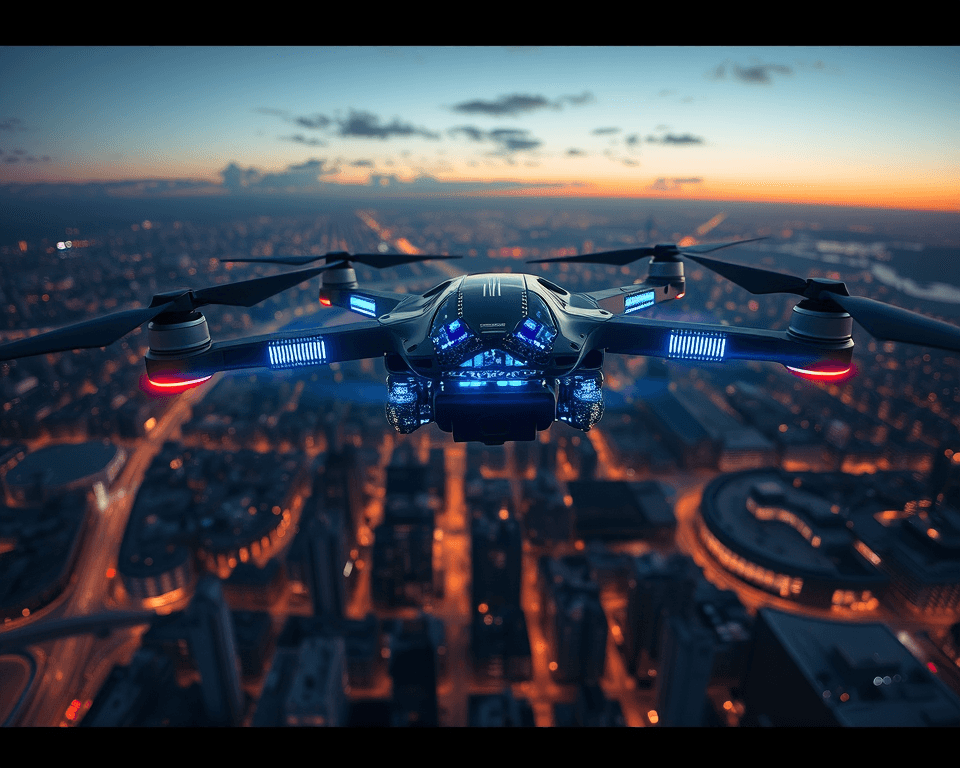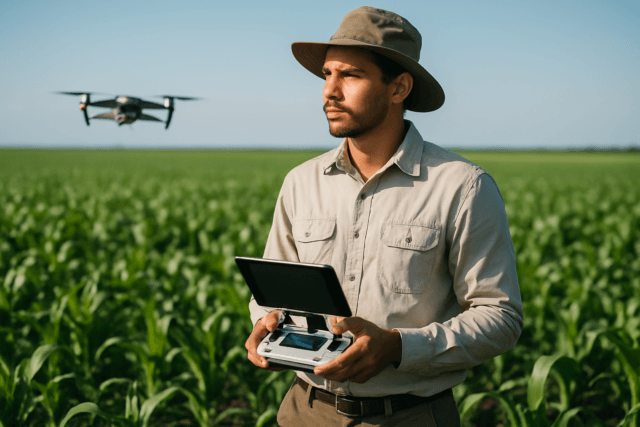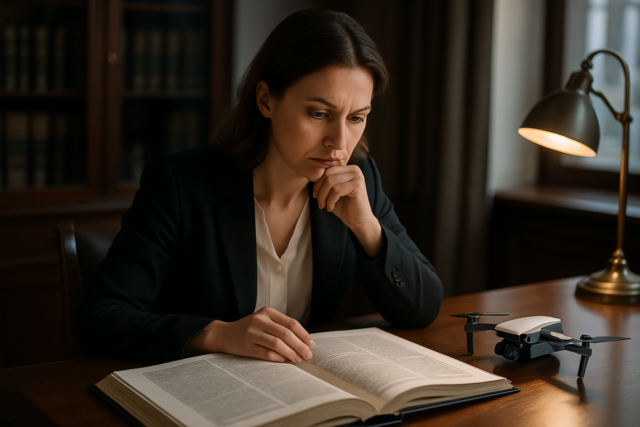Drones, also known as unmanned aerial vehicles (UAVs), have become increasingly popular in recent years, finding applications in various fields, from photography and videography to agriculture and delivery services. Understanding the fundamental components that make up a drone is essential for anyone interested in piloting, building, or simply appreciating these technological marvels. This guide will explore the key components of a typical drone, explaining their functions and how they work together to achieve flight.
Essential Drone Components
1. Frame
The frame serves as the backbone of the drone, providing structural support and housing for all other components. It is typically made from lightweight yet durable materials such as carbon fiber, plastic, or aluminum to minimize weight and maximize strength. The frame’s design can vary depending on the drone’s intended use, size, and configuration (e.g., quadcopter, hexacopter, octocopter).
2. Motors
Motors are responsible for generating the rotational force needed to spin the propellers. Drones typically use brushless DC motors due to their efficiency, durability, and high power-to-weight ratio. The number of motors depends on the drone’s configuration, with quadcopters having four, hexacopters having six, and octocopters having eight.
- Brushless vs. Brushed Motors: Brushless motors are more efficient, durable, and offer a higher power output compared to brushed motors. They also have a longer lifespan and require less maintenance.
3. Propellers
Propellers, also known as props, are airfoil-shaped blades that generate thrust when rotated by the motors. The shape, size, and pitch (angle of the blade) of the propellers determine the amount of lift and thrust produced. Drones typically use two types of propellers: clockwise (CW) and counter-clockwise (CCW), which are paired diagonally to balance the rotational forces and maintain stability.
- Propeller Materials: Propellers are commonly made from plastic, carbon fiber, or a combination of both. Carbon fiber propellers are stiffer and more efficient but also more expensive and prone to damage.
4. Electronic Speed Controllers (ESCs)
Electronic Speed Controllers (ESCs) regulate the speed of the motors based on signals from the flight controller. They act as intermediaries between the battery and the motors, providing precise control over the motor’s RPM (revolutions per minute). ESCs are essential for stable and responsive flight.
5. Flight Controller
The flight controller is the brain of the drone, responsible for processing sensor data, interpreting pilot commands, and controlling the motors to maintain stable flight. It typically consists of a microcontroller, gyroscopes, accelerometers, and barometers. The flight controller uses complex algorithms to stabilize the drone, execute maneuvers, and provide autonomous flight capabilities.
- Sensors:
- Gyroscopes: Measure the drone’s angular velocity (rate of rotation).
- Accelerometers: Measure the drone’s linear acceleration.
- Barometers: Measure the drone’s altitude based on atmospheric pressure.
- Magnetometers: Measure the drone’s orientation relative to the Earth’s magnetic field (compass).
- GPS: Global Positioning System, used for navigation and autonomous flight.
6. Battery
The battery provides the power source for all the drone’s components. Lithium Polymer (LiPo) batteries are commonly used in drones due to their high energy density, lightweight, and ability to deliver high currents. The battery’s capacity (measured in mAh) determines the drone’s flight time.
- Battery Safety: LiPo batteries require careful handling and storage to prevent damage or fire hazards. It’s important to use a LiPo-compatible charger and avoid overcharging or discharging the battery.
7. Power Distribution Board (PDB)
The Power Distribution Board (PDB) distributes power from the battery to the various components of the drone, such as the motors, ESCs, flight controller, and other peripherals. It simplifies wiring and provides a central point for power management.
8. Receiver
The receiver receives radio signals from the remote controller, allowing the pilot to control the drone’s movements. It transmits the pilot’s commands to the flight controller, which then adjusts the motor speeds accordingly.
9. Transmitter (Remote Controller)
The transmitter, also known as the remote controller, is used by the pilot to control the drone’s movements. It sends radio signals to the receiver on the drone, allowing the pilot to adjust the drone’s speed, direction, altitude, and other parameters.
10. Camera and Gimbal (Optional)
Many drones are equipped with a camera for capturing aerial photos and videos. A gimbal is a mechanical device that stabilizes the camera, allowing for smooth and steady footage even when the drone is moving or experiencing vibrations.
11. First-Person View (FPV) System (Optional)
FPV systems are commonly used in racing and freestyle drones. They consist of a camera, video transmitter (VTX), and video receiver (VRX), allowing the pilot to see a live video feed from the drone’s perspective through goggles or a screen.
12. GPS Module
A GPS module allows the drone to determine its precise location using the Global Positioning System. This is essential for autonomous flight modes, such as return-to-home and waypoint navigation.
Additional Components and Accessories
- Landing Gear: Provides a stable base for takeoff and landing.
- Propeller Guards: Protect the propellers from damage during collisions.
- Lights: Improve visibility and add aesthetic appeal.
- Telemetry System: Transmits data from the drone to the pilot, such as battery voltage, altitude, and GPS coordinates.
- Obstacle Avoidance Sensors: Help the drone avoid obstacles during flight.
Drone Regulations in the UK
In the UK, drone operations are regulated by the Civil Aviation Authority (CAA). Here’s a summary of the key regulations:
- Registration: If you own or are responsible for a drone or model aircraft weighing 250g or more, or any drone with a camera (unless it’s a toy), you must register with the CAA.
- Flyer ID: Anyone flying (piloting) a drone that weighs over 250g must pass a basic test with the CAA to get a Flyer ID. They must carry their Flyer ID details at all times while flying.
- Maximum Height: Drones must not be flown higher than 120m (400ft) above ground level.
- Visual Line of Sight (VLOS): Pilots must maintain a visual line of sight with their drones at all times without using any visual aids.
- Restricted Areas: You must not fly a small unmanned aircraft closer than 5 kilometers (3 miles) from the boundary of a protected aerodrome without permission.
- Congested Areas: You may not fly a drone within 150 meters of any congested area or organized open-air assembly of more than 1,000 persons; or within 50 meters of any person, property, vessel, vehicle, or structure which is not under the control of the person in charge of the aircraft.
- Insurance: Insurance is required for all commercial drone operations.
Conclusion
Drones are complex machines composed of various components that work together to achieve flight. Understanding the function of each component is essential for anyone interested in building, piloting, or maintaining drones. By familiarizing yourself with the information in this guide, you’ll be well-equipped to explore the exciting world of drone technology. Always remember to fly responsibly and in accordance with local regulations.





